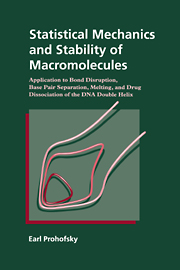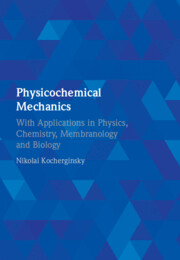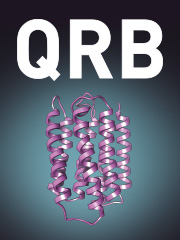Statistical Mechanics and Stability of Macromolecules
This book develops a statistical mechanical analysis of the stability of biological macromolecules. The author's approach is valid both for the long time-scale needed for DNA bond disruption, and also for highly co-operative transitions needed to explain helix melting. A new theoretical approach for executing macromolecule calculations is developed. In particular, the author devises a method for describing chemical bond disruption in these large systems, which are then used to determine when the helix melts and how drugs can dissociate from the helix. Melting temperatures are found to be in excellent agreement with experimental observations. The book will be of interest to biomolecular dynamics researchers, especially to graduate students in biological physics, theoretical chemistry and molecular biology.
- The methods developed outstrip any current approach, as the calculations are much more efficient
- The only viable method yet developed for efficiently calculating melting and drug separation in such large systems
- Contains the physics background needed to understand and use the algorithms developed
Product details
July 2005Paperback
9780521675574
240 pages
234 × 157 × 14 mm
0.35kg
71 b/w illus. 25 tables
Available
Table of Contents
- Preface
- 1. Introduction
- 2. Macromolecular stability
- 3. Lattice dynamics
- 4. Effective phonon theory
- 5. Premelting disrupted chemical bonds
- 6. Co-operative melting
- 7. Strained chemical bonds: salt and pressure effects
- 8. Bond disruption and conformation change: B to Z confirmation change in DNA
- 9. Hydration effects: structural water
- 10. Helix with daunomycin intercalated: increased helix stability and daunomycin-DNA bonding constant
- 11. Non repeating DNA
- 12. Cutting and splicing: junctions, inserts and the replicating fork
- 13. Interaction between a helix and a single attached molecule
- 14. Energy considerations in bond opening
- Appendix 1
- Appendix 2
- Appendix 3. Index






